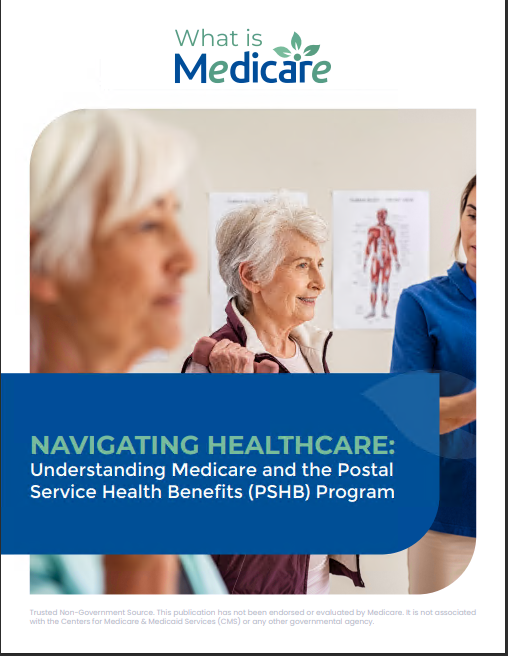Key Takeaways:
- Medigap plans provide supplemental coverage to help with out-of-pocket costs that Original Medicare doesn’t cover.
- Choosing the right Medigap plan depends on factors like healthcare needs, budget, and the specific benefits you’re seeking.
Medigap Plan Types Explained: How to Choose the Right One for Your Healthcare Needs
Navigating the world of health insurance can be overwhelming, especially when it comes to understanding Medigap plans. Medigap, also known as Medicare Supplement Insurance, offers a way to cover the gaps left by Original Medicare. With various plan types available, choosing the right one requires careful consideration of your healthcare needs, budget, and coverage preferences. This article will guide you through the different Medigap plan types and offer practical tips on how to select the best one for your individual situation.
What is Medigap?
Medigap plans are designed to help cover some of the healthcare costs that Original Medicare doesn’t pay for, such as copayments, coinsurance, and deductibles. These plans are sold by private insurance companies and are standardized in most states, meaning each plan type offers the same basic benefits regardless of the provider. However, monthly premiums can vary depending on the insurance company and other factors like location, age, and smoking status.
Standardized Medigap Plans
In 2024, there are ten standardized Medigap plans available in most states: Plans A, B, C, D, F, G, K, L, M, and N. Each of these plans offers a different level of coverage, and not all plans are available to everyone, depending on when you first became eligible for Medicare. It’s important to review what each plan covers, as well as the associated premiums, to make an informed decision.
Understanding Medigap Plan Coverage
Plan A
Plan A is the most basic Medigap option, covering essential benefits such as Medicare Part A coinsurance and hospital costs (up to an additional 365 days after Medicare benefits are exhausted), Part B coinsurance or copayment, the first three pints of blood, and Part A hospice care coinsurance or copayment. This plan is often chosen by those who want minimal supplemental coverage with lower premiums.
Plan B
Plan B includes everything that Plan A covers, with the addition of Medicare Part A deductible coverage. This means it helps pay for the deductible associated with hospital stays under Medicare Part A, making it a slightly more comprehensive option than Plan A.
Plan C
Plan C offers more extensive coverage, including Medicare Part B deductible payments and foreign travel emergency care. However, this plan is only available to those who were eligible for Medicare before January 1, 2020, due to changes in Medicare Supplement policy rules.
Plan F
Like Plan C, Plan F is only available to those eligible before 2020. Plan F is the most comprehensive Medigap plan, covering all out-of-pocket costs, including Medicare Part B excess charges. While it offers the most coverage, it tends to have higher premiums than other plans.
Plan G
Plan G has become one of the most popular Medigap plans since Plan F became unavailable to new enrollees. It covers almost everything that Plan F does, except for the Medicare Part B deductible. Plan G is often recommended for those who want comprehensive coverage but are comfortable paying the Part B deductible out of pocket.
Plan K and Plan L
Plan K and Plan L are cost-sharing plans, meaning they cover a percentage of certain Medicare costs instead of the full amount. For example, Plan K covers 50% of Medicare Part A coinsurance, while Plan L covers 75%. These plans typically have lower premiums but higher out-of-pocket costs. They also include out-of-pocket limits, which may appeal to those who want some protection from high healthcare expenses.
Plan N
Plan N offers a balance between coverage and cost. It covers most of the same benefits as Plan G, but beneficiaries are required to pay copayments for some doctor visits and emergency room trips. Plan N is often a good option for those who want relatively comprehensive coverage with lower premiums, provided they are comfortable with the copayment requirements.
How to Choose the Right Medigap Plan
Assess Your Healthcare Needs
The first step in choosing the right Medigap plan is to evaluate your current and anticipated healthcare needs. Consider how often you visit doctors, the types of services you require, and whether you need frequent hospital care. If you have a chronic condition that requires regular treatment, a more comprehensive plan like Plan G or Plan F (if you’re eligible) might be the best option.
On the other hand, if you’re generally healthy and don’t expect to need much medical care, a plan with lower premiums and higher out-of-pocket costs, such as Plan K or Plan L, could save you money while still providing essential coverage.
Consider Your Budget
Your budget is a critical factor when selecting a Medigap plan. While some plans offer extensive coverage, they also come with higher premiums. It’s important to balance the level of coverage you need with what you can afford each month. For those looking to minimize monthly expenses, a plan like Plan N might be a good compromise, offering solid coverage while keeping premiums more affordable.
Additionally, keep in mind that Medigap premiums may increase over time due to factors like inflation or changes in healthcare costs. Ensure that the plan you choose is financially sustainable in the long run.
Factor in Foreign Travel
If you frequently travel outside the United States, you may want to consider a Medigap plan that includes foreign travel emergency coverage. Plans C, D, F, G, M, and N offer this benefit, covering 80% of emergency care costs incurred during international travel. This can provide peace of mind if you spend time abroad and worry about unexpected medical emergencies.
Compare Plans in Your Area
While the benefits of Medigap plans are standardized, premiums can vary widely depending on your location and the insurance provider. It’s important to compare different plans in your area to find the best option for your situation. In some cases, certain plans may be more popular or widely available in your state, which could impact both the premium rates and your ability to switch plans later.
Open Enrollment Period
The best time to enroll in a Medigap plan is during your Medigap Open Enrollment Period. This six-month window begins the month you turn 65 and are enrolled in Medicare Part B. During this time, you can choose any Medigap plan available in your area without medical underwriting, meaning you can’t be denied coverage or charged higher premiums due to pre-existing conditions. After this period, enrolling in a Medigap plan may be more difficult or expensive.
Choosing a Plan for Long-Term Healthcare Needs
For those planning for long-term healthcare needs, it’s essential to select a Medigap plan that will provide adequate coverage as your healthcare requirements change. Aging often brings about increased medical needs, so it’s wise to opt for a plan that will protect you from significant out-of-pocket costs in the future.
Consider how your health may evolve over the next 5 to 10 years. Will you need more doctor visits, specialized treatments, or hospital stays? If so, a more comprehensive plan like Plan G could help protect you from rising healthcare costs down the line.
When to Seek Expert Advice
Selecting the right Medigap plan can be challenging, particularly if you’re unfamiliar with the nuances of Medicare coverage. Licensed insurance agents can provide personalized advice based on your healthcare needs and budget. While this article serves as a helpful starting point, it’s important to consult with an expert who can guide you through the specifics of each plan.
Additionally, reviewing the information on official resources such as Medicare.gov or CMS.gov can offer further insights into your options.
Making an Informed Decision About Medigap Plans
Choosing the right Medigap plan requires careful consideration of several factors, including your healthcare needs, budget, and potential for future medical expenses. By understanding the differences between each plan type and assessing your own needs, you can make an informed decision that ensures you have the necessary coverage for years to come.
Contact Information:
Email: [email protected]
Phone: 9045552345









